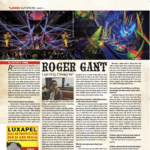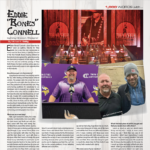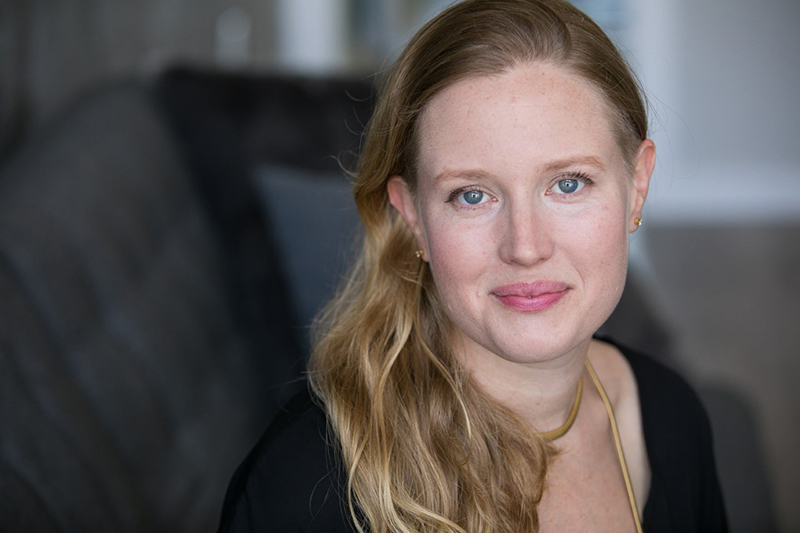
Angrette McCloskey, PhD is a multidisciplinary scenic designer and production manager who creates dynamic spatial experiences for live events in theatre, opera, fashion shows, and public spaces. She’s worked over 20 seasons of New York Fashion Week as a lead production manager and scenic design coordinator (Ralph Lauren, Theory, Rag & Bone) and now specializes in large-scale luxury events (the Dolce & Gabbana take-over of the Metropolitan Opera and Cartier High Jewelry). Recent design credits include Into The Woods at American Conservatory’s Strand Theatre and Weightless at the Public Theatre’s Under the Radar Festival. McCloskey has worked as an assistant scenic designer on Broadway (Jesus Christ Superstar, Guys & Dolls), at the Metropolitan Opera (Faust), and on dozens of U.S. and international productions. She remodeled the 7,000 square foot Palace of Fine Arts Theatre lobby into a multi-use event space, and designed the spatial experience for public visitors to Brian Tolle’s monumental sculpture, Eureka! in the rotunda of NYC’s Federal Hall. Since the pandemic, she worked her second season as production manager on the Savage X Fenty show which aired in September. McCloskey received her PhD from Stanford’s Theatre & Performance Studies Department.
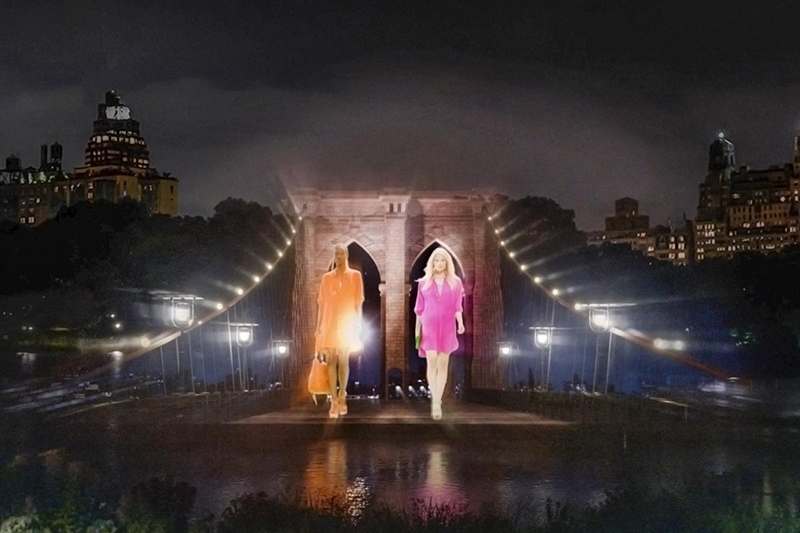
PLSN: How did you get into the industry?
Angrette McCloskey: I went to NYU for my undergraduate training, where I focused in scenic design and stage management. Right out of college, I started working as a scenic painter, designing for off-off-Broadway shows and teaching stagecraft for five years. At the same time, I was taking any call I could get as a painter, carpenter, even electrician, but painting got me in doing freelance work with KadaN Productions, a scenic supplier for fashion shows and corporate events.
In 2011, when I was trying to get out of events, I moved to California to go to Stanford to get my PhD in theater & performance studies. But as a grad student, who again, needed to make some money, I called up a friend in New York who worked in events and fashion shows to see what was available. My first summer as a PhD student at Stanford, I found myself back in events, working as a production manager for fashion shows through PRODJECT. At the time, they were small 12-minute shows; some of the first shows at Moynihan Station [in NYC] when it was definitely nothing more than a loading dock for the USPS. I recall having to run the subs as loud as possible before we hung the drapes, in order to shake all the paint chips and pigeon feathers out of the ceiling. As the company ramped up its productions, I continued to work for them; spending anywhere from 30 to 60% of my time split between New York and California studying and working.
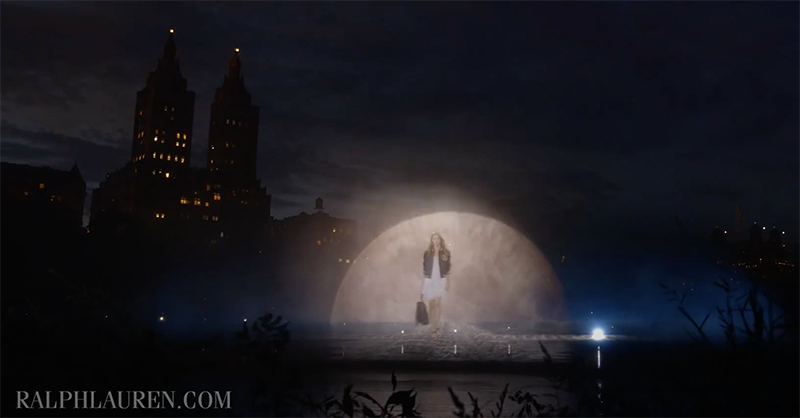
Is there a project that stands out for you in the course of your career so far?
There’ve been a range of interesting events that I’ve worked on. In 2014, I was the lead project manager for a fashion show in NYC’s Central Park where virtual models were rear projected onto a water screen on a lake. The event was Polo 4D for Ralph Lauren and celebrated the opening of their new flagship store as part of NYFW. The idea was that out of nowhere, this magical, ethereal water screen shows up, and you see a fashion show. The audience stood on Cherry Hill looking out at the lake in Central Park watching the show with the video of the models projected onto a 150-foot-wide by 60-foot tall, fan-shaped water screen.
The craziest thing about it was that we weren’t allowed to use the water in the lake to feed the pump for the projection screen. We are in the middle of a body of water, but not allowed to use that water. Instead, we had to create a 40-by-40-by-10-foot deep, thick, heavy vinyl pool, with inflated one-foot diameter berms in the middle of the lake. We fed water into this isolated pool from a fire hose located about 600 feet away. So, I had to calculate things like hose drag and how much water pressure we’d get from this fire hydrant. The numbers on it are pretty crazy. The pump for the water curtain required 80 gallons per second, which means 6,000 cubic feet and 45,600 gallons of water for a 9.5 minute show; a huge amount of water. This problem was something that I had never encountered before. I was used to dealing with flats and drapes, truss and lighting rigs. Now I’m learning about how water operates. I did very much enjoy being able to get into my swimsuit and check on the pump in the pool — inside of the Central Park lake — because who gets to do that?
That was a unique and fun event that really accentuated the degree to which our work, especially when you’re going from site to site to site, has completely different sets of requirements for each project. You need to learn different things in order to accomplish each new job. I like the new challenge each time.
Another production management job that changed things for me in terms of events was the week-long series of events done by Dolce and Gabbana in New York in 2018, also produced by PRODJECT. Their Alta Moda women’s couture night was at the Metropolitan Opera House. We were using the whole space — from the Grand Tier, into the house, all the way to the rear loading dock. Dinner was being held on the stage of the Met on the Zeffirelli set for Puccini’s Turandot. We also had a display and pyrotechnic show on the Lincoln Center Plaza. My dissertation — about the relationship between architecture and performance — was officially filed at Stanford the day the event loaded in. And there I was, up to my elbows, in one of the most symbolic buildings in performance’s institutional history.
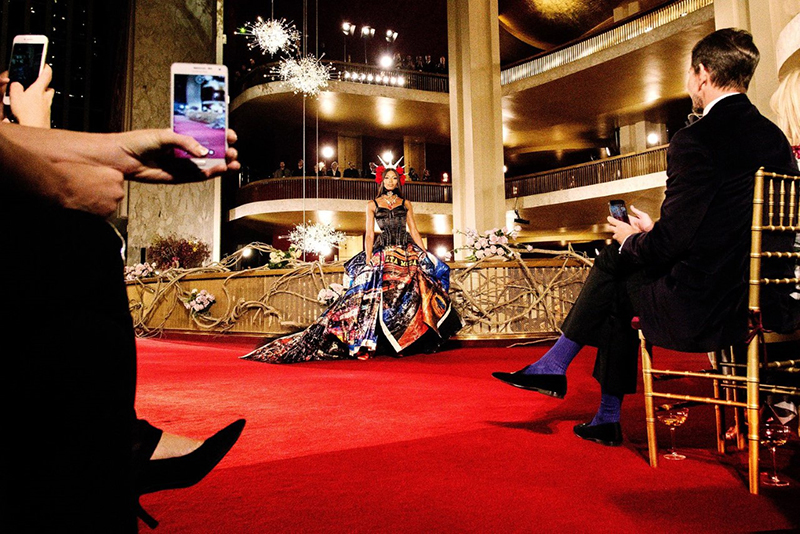
Is there a piece of advice you would give to somebody who’s just starting out?
To listen; actively listen. Pay attention to each element of the production around you. There is nothing actually too small for you to know about or care about. Also, as a production manager interacting with crews, I try to be vigilant about not separating “I” from “we.” We are doing this together. Remembering my choices are absolutely going to affect many, many more people, and that the accomplishments taken from the work are the accomplishments of many, many others as well.
What do you enjoy most about your career?
The problem-solving and the people. Each job has a whole new set of requirements, an entirely new context, and that means that it’s different every time. But, when you do get to work with the same team or the same crew of people from job to job to job, that also makes such a huge difference. So, something between the newness of each project, and then consistency of being able to develop special, collaborative relationships over time.
I am working on finding the right integration of my different types of projects. In addition to events, I still do theater and am an active researcher and educator. I enjoy all of that work, so it’s more about finding a balance. Theater, live events, as well as writing and teaching, those for me, make up a good balance in personal craft.
To see more of Angrette McCloskey’s work, go to www.angrette.com.
